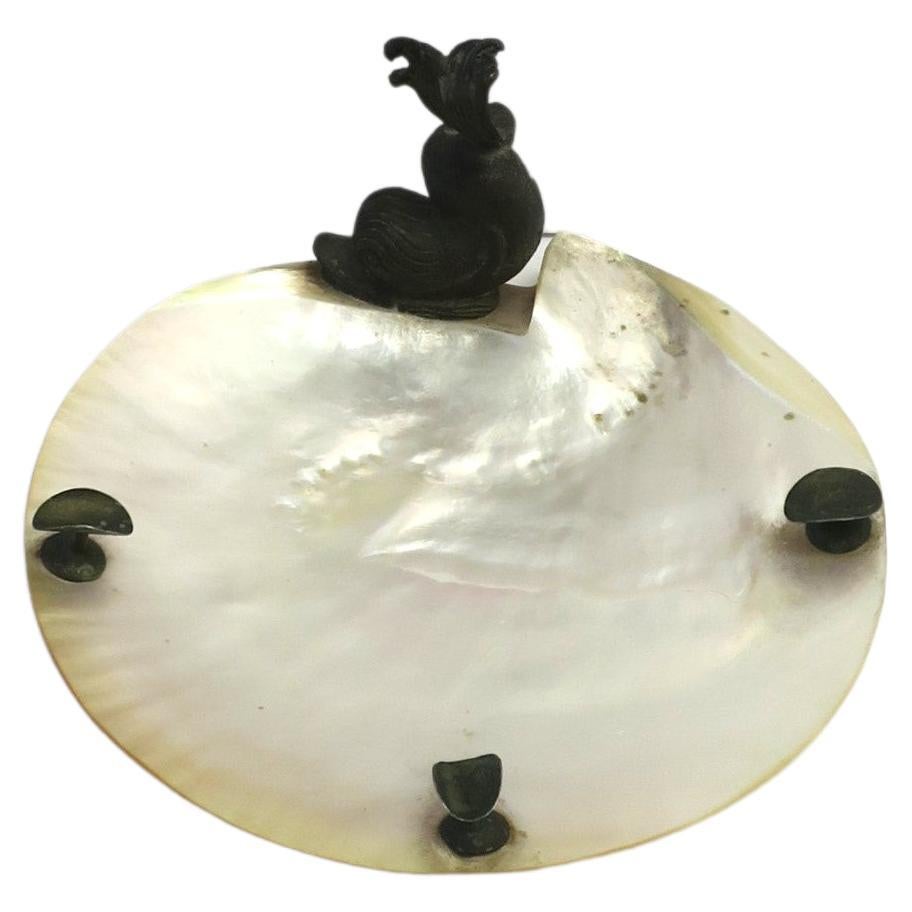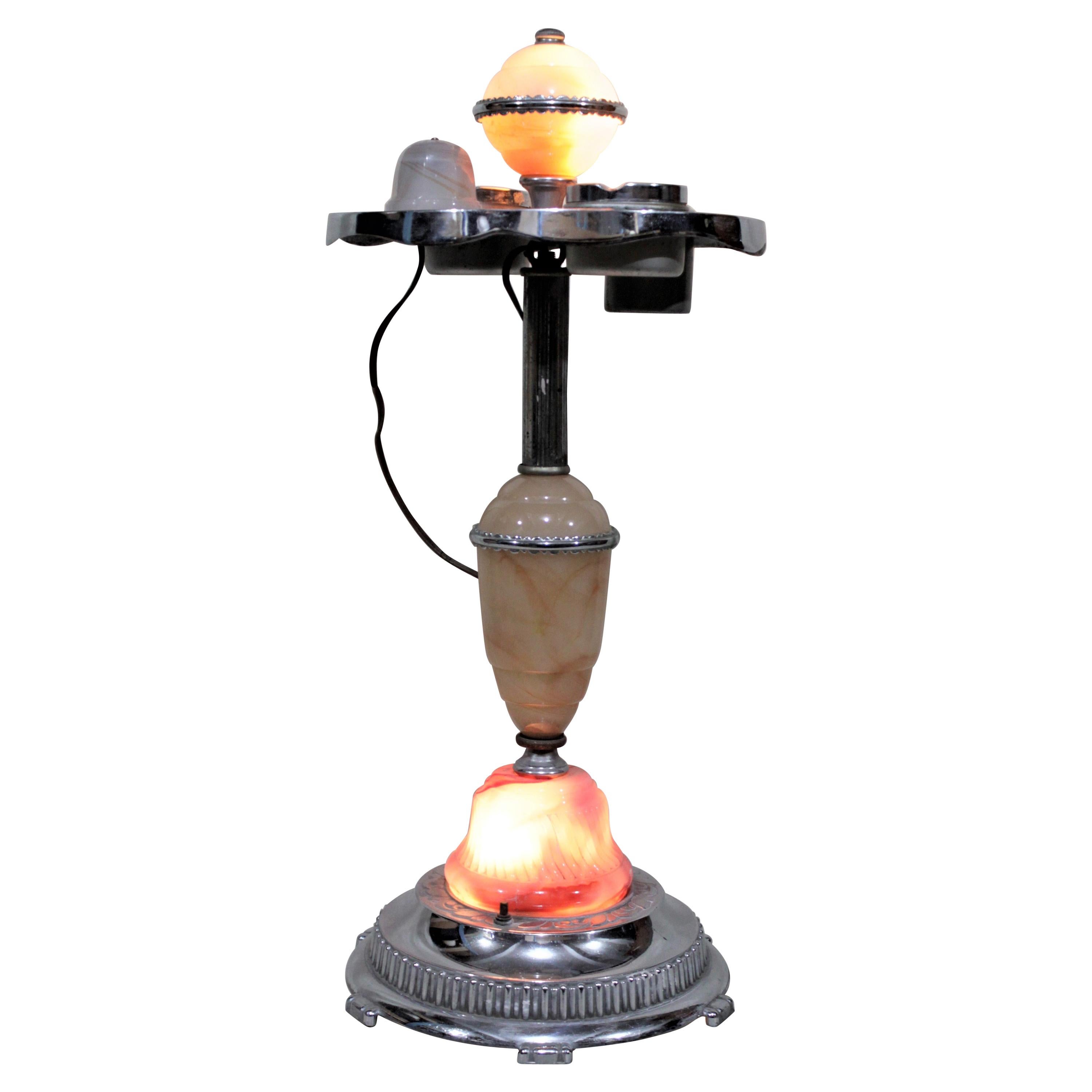Items Similar to Black Stone Catchall Vide-Poche or Ashtray
Want more images or videos?
Request additional images or videos from the seller
1 of 12
Black Stone Catchall Vide-Poche or Ashtray
About the Item
A substantial black stone ashtray or catchall vide-poche, circa early to mid-20th century, England. Great for its indented use for tobacco products or as a catchall vide-poche for coin change, jewelry, keys, etc. Piece is a nice size: Dimensions: 1.25" Height x 7.07" x 7.07" Square.
Other items shown available separately.
- Dimensions:Height: 1.25 in (3.18 cm)Width: 7.07 in (17.96 cm)Depth: 7.07 in (17.96 cm)
- Materials and Techniques:
- Place of Origin:
- Period:
- Date of Manufacture:circa 20th Century
- Condition:Wear consistent with age and use. Minor losses. - Good condition with some surface wear as shown in images. - Jewelry for photo-op only.
- Seller Location:New York, NY
- Reference Number:1stDibs: LU1314227149342
About the Seller
5.0
Vetted Seller
These experienced sellers undergo a comprehensive evaluation by our team of in-house experts.
Established in 2010
1stDibs seller since 2015
1,859 sales on 1stDibs
Typical response time: <1 hour
- ShippingRetrieving quote...Ships From: New York, NY
- Return PolicyA return for this item may be initiated within 1 day of delivery.
More From This SellerView All
- Italian Marble Catchall Vide-Poche or Ashtray, Italy 1970sLocated in New York, NYA very beautiful and substantial Italian 70s Modern/Post-Modern black and white marble ashtray or vide-poche catchall, circa 20th centur...Category
Vintage 1970s Italian Post-Modern Decorative Dishes and Vide-Poche
MaterialsMarble
- Italian White and Gold Catchall Vide-Poche or AshtrayLocated in New York, NYAn Italian octagonal white and gold ceramic catchall vide-poche or ashtray, circa late-20th century, Italy. Great as a vide-poche catchall (shown holding jewelry), and as an ashtray with four support indents. Piece appears to have never been used. Octagonal in shape with a chevron-like design, and glossy/shiny white and gold finish. Marked 'Italy' on underside as shown in last image. Dimensions: 7.44" x 7.44". Green paperweight...Category
Late 20th Century Italian Hollywood Regency Decorative Dishes and Vide-P...
MaterialsCeramic
- French White Porcelain Jewelry Tray Catchall Vide-Poche or AshtrayBy HermèsLocated in New York, NYA French white porcelain tray vide-poche (catch-all) or ashtray, circa mid to late-20th century, France. A great standalone piece or tray to hold ...Category
Mid-20th Century French Decorative Dishes and Vide-Poche
MaterialsPorcelain
- Italian Tommaso Barbi Catchall Vide-Poche or Ashtray, Italy 1970sBy Tommaso BarbiLocated in New York, NYA beautiful Italian brass and green ceramic vide-poche catchall, by Italian designer Tommaso Barbi, '70s Modern period, Italy. Piece is by Italian designer Tommaso Barbi in a green g...Category
Vintage 1970s Italian Modern Decorative Dishes and Vide-Poche
MaterialsBrass
- Mother of Pearl Ashtray or Jewelry Catchall with Dolphin DesignLocated in New York, NYA white mother of pearl ashtray with dolphin sculpture, circa early-20th century. Piece is polished mother-of-pearl with a dolphin sculpture/statue and t...Category
Early 20th Century Unknown Ashtrays
MaterialsBronze
- Italian Yellow Pottery Ashtray or Catchall Bitossi NetterBy Rosenthal Netter, BitossiLocated in New York, NYAn Italian yellow pottery ashtray with flower center and lip for cigarette, Mid-Century Modern Italian period, circa mid-20th century, Italy. Pott...Category
Mid-20th Century Italian Mid-Century Modern Ashtrays
MaterialsPottery
You May Also Like
- Vintage Brass Cigar Ashtray Mid-Century Modern Vide-Poche Catchall Tobacco PieceLocated in Miami, FLMid-Century Modern patinated brass ashtray, catchall, vide-poche or Desk Accessories. Maked with gold foil label at the base, Made in Taiwan. In good...Category
Late 20th Century North American Mid-Century Modern Tobacco Accessories
MaterialsBrass
- Art Deco Chrome Lighted Smoker's Stand or Ashtray with Electric LighterLocated in Hamilton, OntarioThis Art Deco styled lighted smoker's stand is unsigned but presumed to have been made in the United States in the 1950s. The stand features a light at the top and base made of swirled glass of orange and cream hues to replicate alabaster which emits a warm glow when lit. The central post is also accented with a marbled and tapered, possibly alabaster cylinder which is separated by a chrome ring. The top features two removable ashtray cups and a covered tobacco canister...Category
Mid-20th Century American Art Deco Tobacco Accessories
MaterialsMetal
- Ashtray Crystal, 1950Located in Ciudad Autónoma Buenos Aires, CCrystal We have specialized in the sale of Art Deco and Art Nouveau and Vintage styles since 1982. Why are there so many antiques in Argentina? In the 1880 – 1940 there was a grate wave of immigration encouraged by the periods of war that were taking place. 1st World War took place between 1914 and 1918 2nd World War took place between 1939 and 1945 The immigrants options were New York or Buenos Aires. Tickets were cheap and in Buenos Aires they were welcomed with open arms, as it was a country where everything was still to be done. Argentina was the country of new opportunities, labour was needed and religious freedom was assured, in many cases the of the family travel first until they were settled and then the rest of the family members join them. In the immigrant museum “Ellis Island Immigrant Building” in New York you can se the promotional posters of the boats that would take them to a new life. Between the years 1895 and 1896, Argentina had the highest DGP (gross domestic product) per capita in the world according to the Maddison Historical Statistics index, this situation arose due to the large amount of food being exported to European countries, which were at war. The Argentinean ships left the port of Buenos Aires with food, but they returned with furniture, clothes and construction elements, (it´s common to see this the old buildings of the historic neighbourhood of San Telmo, the beams with the inscription “Made in England)”, as well as many markets that were built in Buenos Aires, such us the San Telmo Market, whose structure was brought by ship and afterwards assembled in 900 Defensa Street. With the great influence of European immigrants living in the country, the children of the upper classes travelled to study in France, resulting in the inauguration of “La Maison Argentinienne”, on 27th of June 1928, in the international city of Paris, which hosted many Argentinians that were studying in Frace. It´s the fourth house to be built after France, Canada and Belgium, being the first Spanish-speaking one. Still in place today (17 Bd Jourdan, 75014, Paris, France). Many of the children of these wealthy families who attended international art exhibitions, museums and art courses abroad, took a keen interest in the European style. This is why Buenos Aires was at the time referred as “The Paris of South America”. Between the years 1890 and 1920 more than a hundred Palaces were built on Alvear Avenue the most exclusive avenue in Buenos Aires. Today some of these palaces have been transformed into museums, hotels and embassies. In the year 1936, the Kavanagh building was inaugurated, it was the tallest reinforced concrete building in South America. During 1994 the American Society of Civil Engineers distinguished it as an “international engineering milestone”, and it´s now considered a World Heritage of Modern Architecture. At the time was common to hire foreign architects such as Le Corbusier, who visited Buenos Aires/Argentina in 1929 and in 1948 he drew up the blueprints for a house built in La Plata City (which was declared a World Heritage Site). In 1947, the Hungarian architect Marcelo Breuer designed “Parador Ariston” in the seaside city of Mar del Plata. After an Argentinean student at Harvard University convinced him to come to Argentina. He worked on an urban development project in the Casa Amarilla, area of La Boca. The Ukrainian architect, Vladimiro Acosta, arrives in Argentina in 1928 and worked as an architect until que moved to Brazil. Antonio Bonet, a Spanish architect who worked with Le Corbusier in Paris, arrives in Argentina in 1937, where he carried out several architectural works and in 1938 designs the well-known BFK chair. Andres Kálnay, of Hungarian origin, made around 120 architectural masterpieces, among which the former Munich brewery stands out, he even made the furniture’s design. The German architect, Walter Gropius, director of the Bauhaus, lived in Argentina, where he wrote articles for “Sur” magazine and founded in Buenos Aires, an architectural firm with Franz Möller, who was also an architect, where he built two houses. At the same time several famous designers decided to immigrate to Argentina, among them we can find the well-known French designer, Jean-Michel Frank, who arrived in the country in 1940 and also worked for the Rockefeller family. Special pieces were made, which were sold exclusively in the country, such as the well-known German company “WMF”, who sold their products by catalogue, which were chosen by the ladies of high society in the list of wedding gifts, as well as the pieces designed by Christofle. The Swiss sculptor Alberto Giacometti, made special pieces for Argentinean mansions. In 1904 the first Jansen branch outside Paris was established in Buenos Aires, as the Argentinean clientele demanded a large amount of furniture, from the end of the 19th century to the mid-20th century. In 1970, the brand Rigolleau Argentina made pieces authorised by Lalique. The brands Maple and Thompson also set up shop in the country. The French plastic artist, Marcel Duchamp moved to Argentina in 1918-1919. Glass signed Gallé, Charder, Leverre, Schneider, Muller and other French firms. They were bought in flower shops and were given to ladies with beautiful floral arrangements. Some furniture manufacturers travelled to international fairs and bough the patterns to produce the furniture in Argentina, such as the furniture firm Englander and Bonta, who bought the patterns ins Italy. It is worth mentioning that in Argentina we have the largest community of Italians outside...Category
Vintage 1950s Italian Space Age Ashtrays
MaterialsCrystal
- Ashtray 1950 CrystalLocated in Ciudad Autónoma Buenos Aires, CCrystal We have specialized in the sale of Art Deco and Art Nouveau and Vintage styles since 1982. If you have any questions we are at your disposal. Pushing the button that reads ...Category
Vintage 1950s Italian Space Age Ashtrays
MaterialsCrystal
- Ashtray 1950 CrystalLocated in Ciudad Autónoma Buenos Aires, CCrystal We have specialized in the sale of Art Deco and Art Nouveau and Vintage styles since 1982. If you have any questions we are at your disposal. Pushing the button that reads ...Category
Vintage 1950s Italian Space Age Ashtrays
MaterialsCrystal
- Ashtray Crystal, 1950Located in Ciudad Autónoma Buenos Aires, CCrystal We have specialized in the sale of Art Deco and Art Nouveau and Vintage styles since 1982. If you have any questions we are at your disposal. Pushing the button that reads ...Category
Vintage 1950s Italian Space Age Ashtrays
MaterialsCrystal





